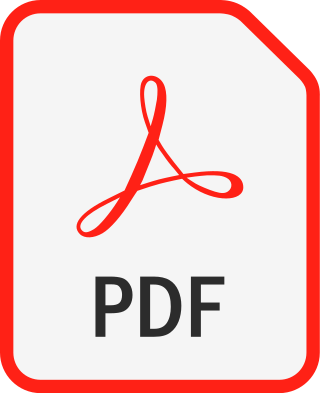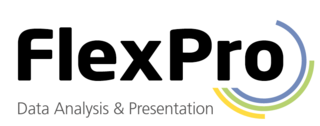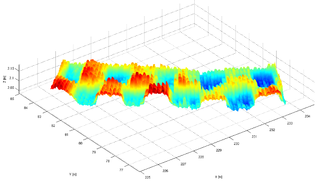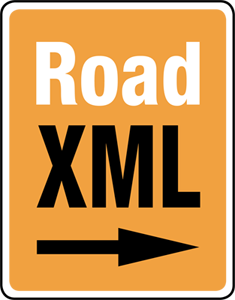
Portable Document Format (PDF), standardized as ISO 32000, is a file format developed by Adobe in 1992 to present documents, including text formatting and images, in a manner independent of application software, hardware, and operating systems. Based on the PostScript language, each PDF file encapsulates a complete description of a fixed-layout flat document, including the text, fonts, vector graphics, raster images and other information needed to display it. PDF has its roots in "The Camelot Project" initiated by Adobe co-founder John Warnock in 1991. PDF was standardized as ISO 32000 in 2008. The last edition as ISO 32000-2:2020 was published in December 2020.
The Organization for the Advancement of Structured Information Standards is a nonprofit consortium that works on the development, convergence, and adoption of projects - both open standards and open source - for Computer security, blockchain, Internet of things (IoT), emergency management, cloud computing, legal data exchange, energy, content technologies, and other areas.
X3D is a set of royalty-free ISO/IEC standards for declaratively representing 3D computer graphics. X3D includes multiple graphics file formats, programming-language API definitions, and run-time specifications for both delivery and integration of interactive network-capable 3D data. X3D version 4.0 has been approved by Web3D Consortium, and is under final review by ISO/IEC as a revised International Standard (IS).
A document file format is a text or binary file format for storing documents on a storage media, especially for use by computers. There currently exist a multitude of incompatible document file formats.
A chemical file format is a type of data file which is used specifically for depicting molecular data. One of the most widely used is the chemical table file format, which is similar to Structure Data Format (SDF) files. They are text files that represent multiple chemical structure records and associated data fields. The XYZ file format is a simple format that usually gives the number of atoms in the first line, a comment on the second, followed by a number of lines with atomic symbols and cartesian coordinates. The Protein Data Bank Format is commonly used for proteins but is also used for other types of molecules. There are many other types which are detailed below. Various software systems are available to convert from one format to another.
Office Open XML is a zipped, XML-based file format developed by Microsoft for representing spreadsheets, charts, presentations and word processing documents. Ecma International standardized the initial version as ECMA-376. ISO and IEC standardized later versions as ISO/IEC 29500.
This article describes the technical specifications of the OpenDocument office document standard, as developed by the OASIS industry consortium. A variety of organizations developed the standard publicly and make it publicly accessible, meaning it can be implemented by anyone without restriction. The OpenDocument format aims to provide an open alternative to proprietary document formats.
A proprietary file format is a file format of a company, organization, or individual that contains data that is ordered and stored according to a particular encoding-scheme, designed by the company or organization to be secret, such that the decoding and interpretation of this stored data is easily accomplished only with particular software or hardware that the company itself has developed. The specification of the data encoding format is not released, or underlies non-disclosure agreements. A proprietary format can also be a file format whose encoding is in fact published, but is restricted through licences such that only the company itself or licensees may use it. In contrast, an open format is a file format that is published and free to be used by everybody.

FlexPro is a proprietary software package for analysis and presentation of scientific and technical data, produced by Weisang GmbH. It runs on Microsoft Windows and is available in English, German, Japanese, Chinese and French. FlexPro has its roots in the test and measurement domain and supports different binary file formats of data acquisition instruments and software. In particular, FlexPro can analyze large amounts of data with high sampling rates.
XLIFF is an XML-based bitext format created to standardize the way localizable data are passed between and among tools during a localization process and a common format for CAT tool exchange. The XLIFF Technical Committee (TC) first convened at OASIS in December 2001, but the first fully ratified version of XLIFF appeared as XLIFF Version 1.2 in February 2008. Its current specification is v2.1 released on 2018-02-13, which is backwards compatible with v2.0 released on 2014-08-05.

EPUB is an e-book file format that uses the ".epub" file extension. The term is short for electronic publication and is sometimes stylized as ePub. EPUB is supported by many e-readers, and compatible software is available for most smartphones, tablets, and computers. EPUB is a technical standard published by the International Digital Publishing Forum (IDPF). It became an official standard of the IDPF in September 2007, superseding the older Open eBook (OEB) standard.
Association for Standardization of Automation and Measuring Systems or ASAM is an incorporated association under German law. Its members are primarily international car manufacturers, suppliers and engineering service providers from the automotive industry. The association coordinates the development of technical standards, which are developed by working groups composed of experts from its member companies. ASAM pursues the vision that the tools of a development process chain can be freely interconnected and allow a seamless exchange of data. The standards define protocols, data models, file formats and application programming interfaces (APIs) for the use in the development and testing of automotive electronic control units. A large amount of popular tools in the areas of simulation, measurement, calibration and test automation are compliant to ASAM standards. Compliance shall guarantee interoperability of tools from different vendors, allow data exchange without the need for converters, and facilitate the exchange of unambiguous specification between customers and suppliers.

OpenCRG is a complete free and open-source project for the creation, modification and evaluation of road surfaces, and an open file format specification CRG. Its objective is to standardize a detailed road surface description and it may be used for applications like tire-, vibration- or driving-simulation.
ETAS GmbH is a German company which designs tools for the development of embedded systems for the automotive industry and other sectors of the embedded industry. ETAS is 100-percent subsidiary of Robert Bosch GmbH.
The Functional Mock-up Interface defines a standardized interface to be used in computer simulations to develop complex cyber-physical systems.

INCA is a measurement, calibration and diagnostic software published by ETAS. With its large installation base in the auto industry, this development software is deployed during all phases of the development of electronic control units (ECUs) and ECU software programs for measuring, calibration, diagnostics and programming.

RoadXML is an open file format for the road networks description used by driving simulators.

RIF/ReqIF is an XML file format that can be used to exchange requirements, along with its associated metadata, between software tools from different vendors. The requirements exchange format also defines a workflow for transmitting the status of requirements between partners. Although developed in the automotive industry, ReqIF is suitable for lossless exchange of requirements in any industry.
ecu.test is a software tool developed by tracetronic GmbH, based in Dresden, Germany, for test and validation of embedded systems. Since the first release of ecu.test in 2003, the software is used as standard tool in the development of automotive ECUs and increasingly in the development of heavy machinery as well as in factory automation. The development of the software started within a research project on systematic testing of control units and laid the foundation for the spin-off of tracetronic GmbH from TU Dresden. ecu.test aims at the specification, implementation, documentation, execution and assessment of test cases. Owing to various test automation methods, the tool ensures an efficient implementation of all necessary activities for the creation, execution and assessment of test cases.







